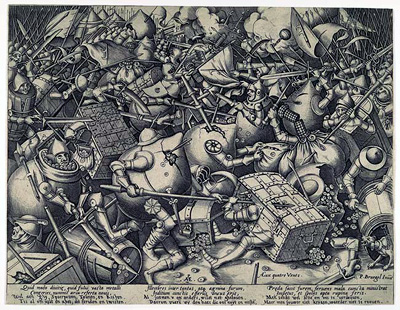
Literature |
Armed Conflict - Armed Conflict in the World Today /
Karen Parker, J.D. ; Anne Heindel, J.D. Humanitarian Law Project/
International Educational Development ; Parliamentary Human Rights
Group (UK). 1999. - ISBN 1 901053 05 9.
Armed Conflict 1946-2001 : A new dataset / Nils Petter
Gleditsch ; Peter Wallenstein ; Mikael Eriksson ; Margareta
Sollenberg ; Håvard Strand. In: Journal of Peace
Research, 2002:5 pp. 615-637
Armed Conflict and Its International Dimensions,
1946–2004 / Lotta Harbom ; Peter Wallensteen. Department
of Peace and Conflict Research, Uppsala University.
I: Journal of Peace Research, 2005. vol. 42, no. 5, 2005,
pp. 623–635
Bloch, Jean de: The future of war in its technical, economic,
and political relations.
- Boston : Ginn and company, 1902. - 380 pp.
http://www.archive.org/details/futureofwarinits00blociala
The cost of war : Unimagiable : Governments tends to
underestimate the bill. In: The Ecconomist, 02/22/2003 p.
71.
Dinstein, Yoram: The Conduct of Hostilities under the Law of
International Armed Conflict.
Cambridge University Press, 2004, pp. 275.
FAO: Armed conflicts
leading cause of world hunger emergencies.
Lampszus, Villiam: Der Menschenschlachthaus. 1912.
Nordstrom, Carolyn: Shadows of War: Violence, Power, and
International Profiteering in the Twenty-First Century.
http://www.ucpressedu/books/pages/10101.html
Ward, Richard: The Anatomy of Warre, or, warre with the wofull
fruits, and effects thereof, laid out to the life.
- London : Printed for Iohn Dalham and Rich,1642. - 22 pp. In
Thomason Collection, British Library
Things clearly handled : "1. What Warre is. 2. The grounds, and
causes of Warre. 3. The things requisite in War. 4. The nature and
miseries of War, both Civill and Forraigne. 5. What things are
justly taxed in War. 6. When War is lawfull. 7. Whether it be
lawfull for Christians to make War. 8. Whether Subjects may take up
armes against their Soveraignes. 9. The remedies against War. 10.
The Meanes to be freed from War. 11. The Remedies, and Meanes both
Military and Morall for the obtaining of Victory in War."
Wright,
Quincy: A Study of War.
The University of Chicago Press, 1942 ; 1965. - 1647 s.
http://www.archive.org/details/studyofwarvol11001580mbp